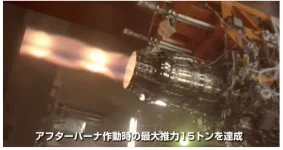- Views: 7K
- Replies: 31
India's selection of the engine to power its future fighter aircraft, the Tejas Mk2 and the initial version of the Advanced Medium Combat Aircraft (AMCA Mk1), involved a significant choice between leading global powerplants.
An advanced version of the Eurojet EJ200 engine, known as the EJ230, was a strong competitor but ultimately did not secure the contract.
The EJ230 engine, derived from the EJ200 that powers the Eurofighter Typhoon jets used by several European air forces, was specifically developed to offer increased power. It generates approximately 102 kilonewtons (kN) of thrust with afterburner (wet thrust) and around 72 kN without (dry thrust).
These specifications positioned the EJ230 within the performance range sought by the Indian Air Force (IAF) for its next generation of indigenous fighter jets, making it a notable option during the selection process.
Despite demonstrating attributes like a high thrust-to-weight ratio and potential for future upgrades, the EJ230 was passed over in favour of the F414 engine, manufactured by the American company General Electric (GE).
The GE F414 is a well-established engine, powering prominent international aircraft such as the US Navy's F/A-18E/F Super Hornet and Sweden's Saab Gripen E fighter.
Key factors influenced India's decision towards the GE F414. Reports suggest that GE's proposal was more cost-effective. Furthermore, the F414 comes with a well-established global supply chain and logistical support network.
Crucially, GE's offer was seen as better aligning with India's 'Make in India' initiative, presenting favourable terms for industrial partnerships and enabling domestic production of the engine, which were decisive elements in the selection.
The Eurojet consortium, which includes Rolls-Royce and MTU Aero Engines, also proposed technology transfer and co-development, but the overall package from GE, particularly regarding cost and timely delivery frameworks, proved more persuasive.
The decision represents a missed opportunity for the Eurojet consortium to gain entry into the expanding Indian military aviation market with the EJ230. Securing the contract would have introduced European engine technology into India's fighter development ecosystem, potentially leading to collaborative efforts on developing even more powerful engines for future aircraft requirements.
With the specific variant GE F414-IN20 now confirmed for the Tejas Mk2 and the initial batches of the AMCA Mk1, India has opted for a mature, globally operated, and combat-tested engine system. This choice is expected to streamline the development and induction phases of these critical defence programs.
However, this may not be the end of the road for Eurojet in India. As India progresses with the AMCA program, particularly for later variants, or looks towards developing sixth-generation fighter capabilities, the need for different engine solutions might arise.
The EJ230 or newer engines from the European consortium could potentially re-enter consideration for future Indian defence projects, possibly with a revised and more competitive offer based on lessons learned from this round.
In the meantime, the EJ230 remains a capable engine available for other international fighter programs and potential upgrades for existing Eurofighter fleets.



